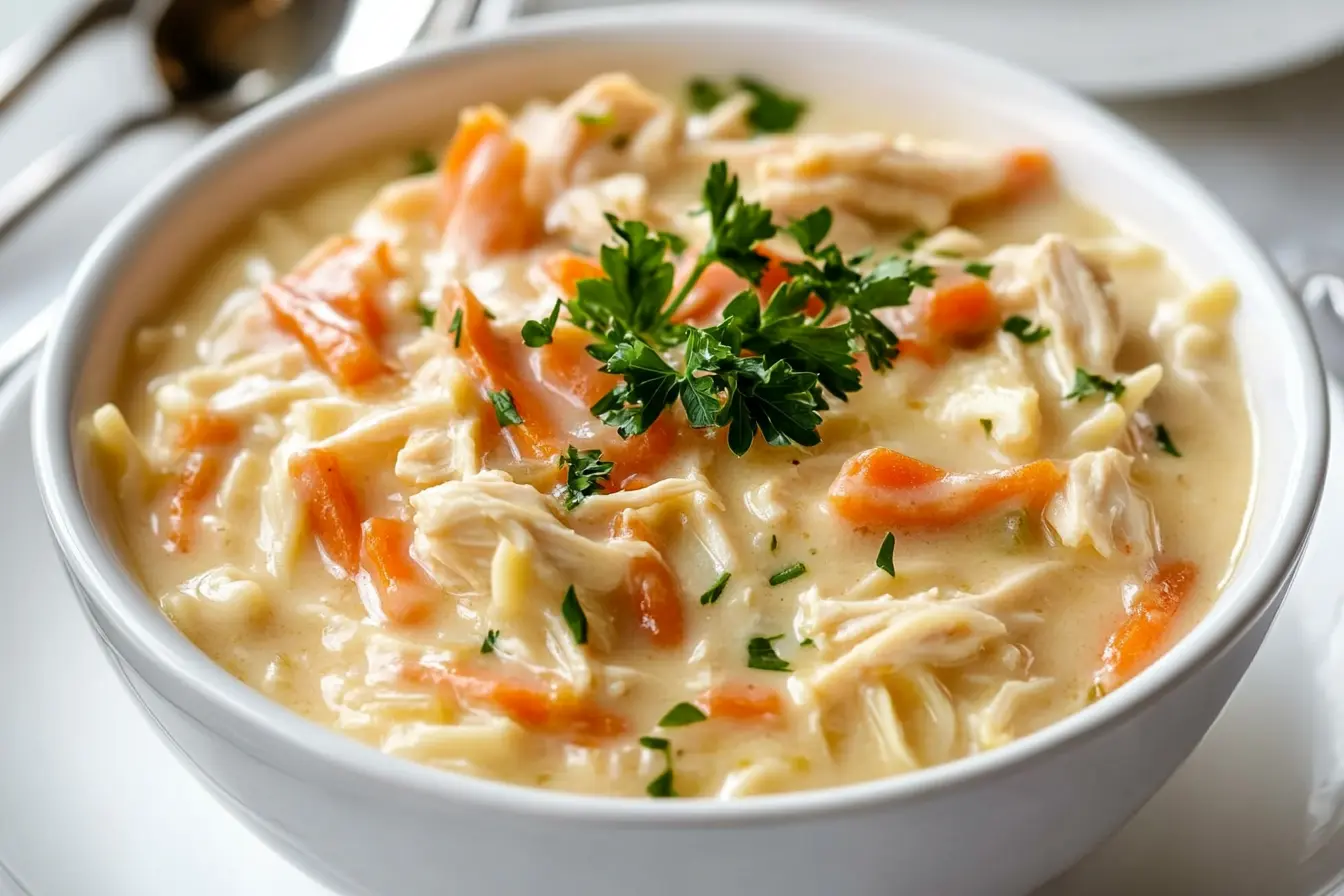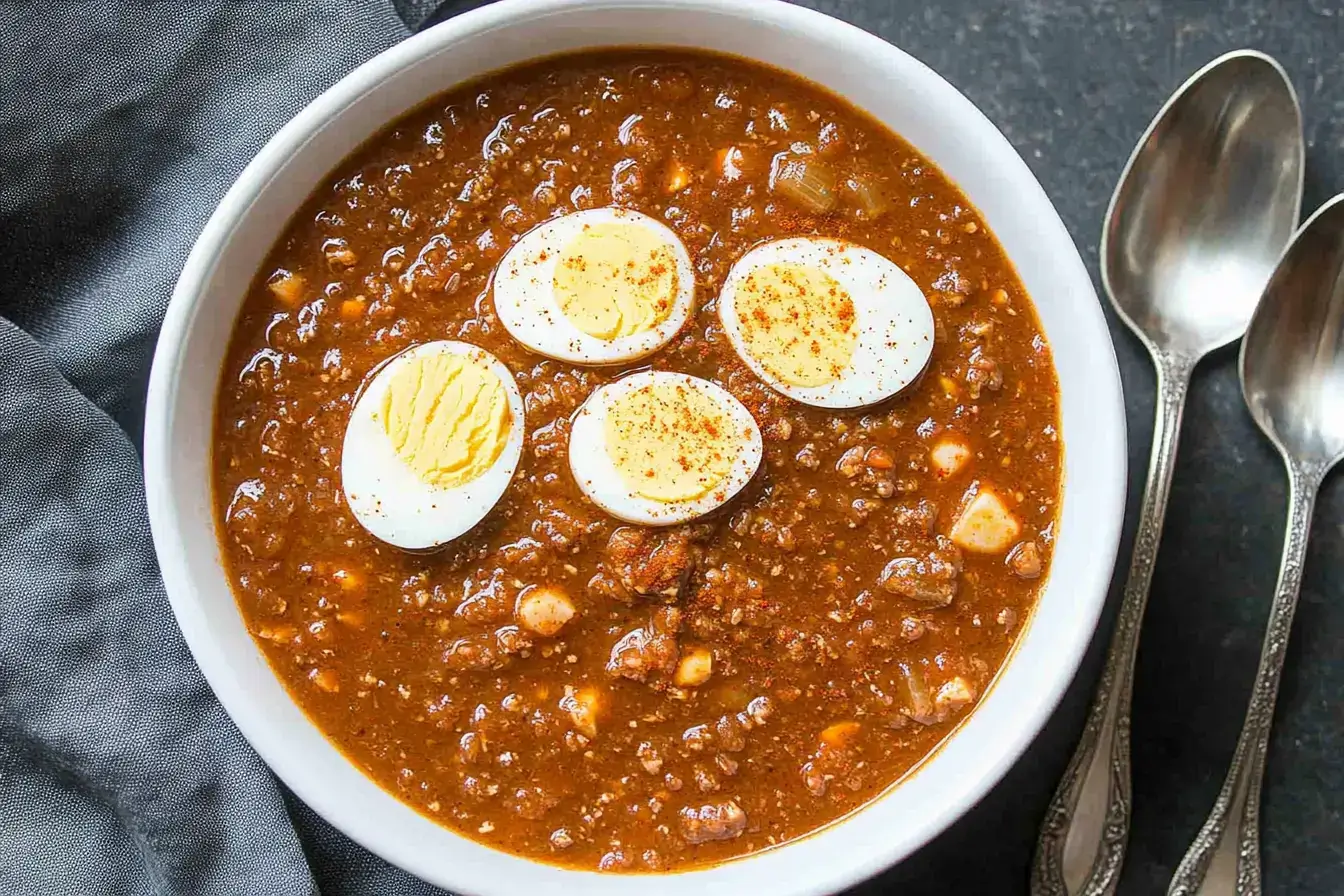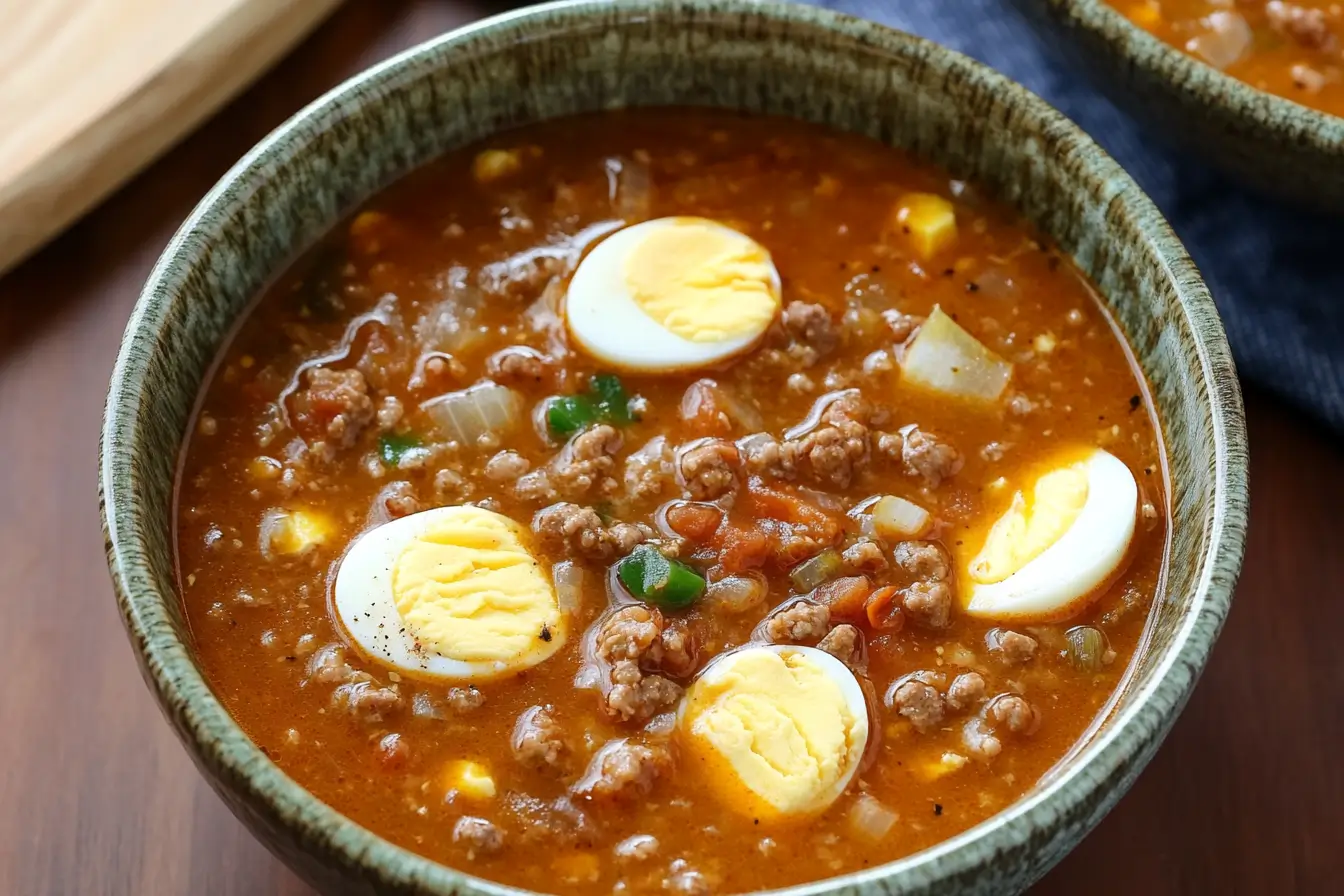Can a beloved Eastern European staple like kasha be transformed into a low-carb delight without losing its soul-warming charm? Let’s explore how to adapt kasha low carb for a modern, health-conscious diet.
Traditionally made from buckwheat groats, kasha has been a comfort food for generations. With a few adjustments, you can enjoy this nutritious grain in a low-carb form without sacrificing its nutty flavor and texture.
In this guide, we’ll show you how to prepare low-carb kasha and offer creative serving ideas to make it a versatile addition to your meals.
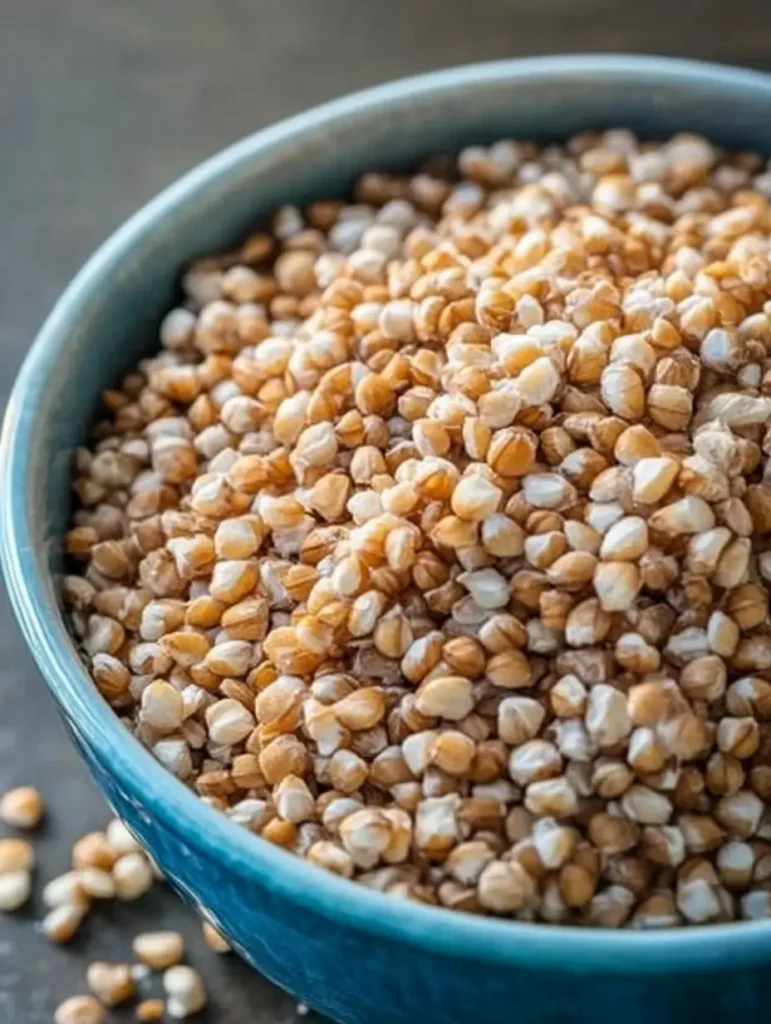
Understanding Traditional Kasha and Its Carb Content
Kasha is a grain that has been around for centuries. It’s a nutritious dish that’s becoming more popular in gluten-free diets. Let’s look at what kasha is and how it’s made.
What is Kasha and Its Nutritional Profile
Kasha is roasted buckwheat groats. It’s full of nutrients like protein, fiber, and minerals. It’s also gluten-free, which is great for people with gluten issues.
Traditional Preparation Methods
To make kasha, you toast the groats first. Then, you cook them in water or broth. This makes the flavor nutty and the texture unique. Recipes often add onions, mushrooms, or eggs to make it even more nutritious.
Carbohydrate Content in Regular Kasha
Kasha is nutritious but does have carbs. A serving of cooked kasha has about 30 grams of carbs. This is less than many other grains, making kasha a good choice for those watching carbs. By controlling how much you eat and pairing it with low-carb foods, you can enjoy kasha in a balanced diet.
Benefits of Making Low-Carb Kasha Alternatives
Making low-carb kasha alternatives is great for those watching their carb intake. These new versions of the classic dish meet different dietary needs. They keep the heart of this beloved healthy grain.
Low-carb kasha is great for meals that are low in carbs. It helps control blood sugar and aids in weight management. You can still enjoy this nutritious dish without going over your carb limit.
Some key advantages of low-carb kasha include:
- Better blood sugar control
- Easier weight management
- Increased satiety
- Preserved nutritional benefits
These alternatives are perfect for many diets. They’re great for those on a ketogenic diet or just trying to eat fewer carbs. Low-carb kasha is a versatile choice for your meals.
Essential Ingredients for Low-Carb Kasha
Creating delicious low-carb kasha starts with the right ingredients and tools. Let’s explore what you need for successful low-carb cooking with buckwheat groats.
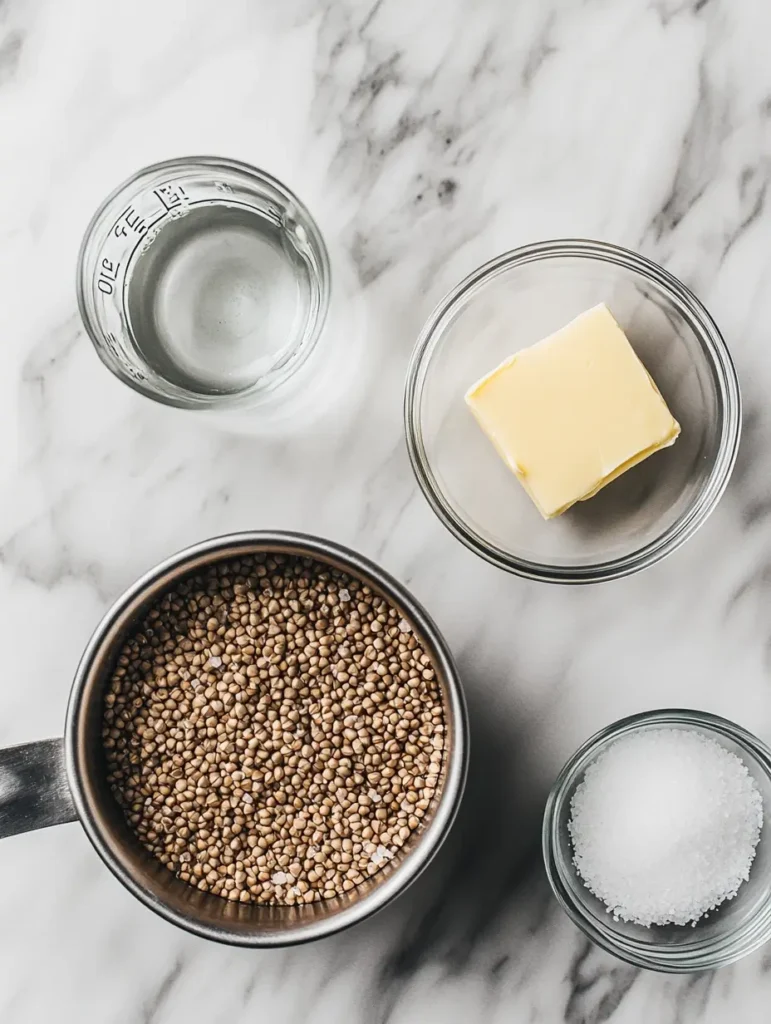
Choosing the Right Buckwheat Groats
For your low-carb kasha, choose raw buckwheat groats. These unroasted kernels have a milder flavor and cook faster. Toasted kasha tastes nuttier but might have slightly higher carbs. Always check labels to ensure you’re getting pure buckwheat without added starches.
Low-Carb Substitutes and Additions
Boost your kasha’s nutrition while keeping carbs low. Mix in cauliflower rice or crushed nuts for texture. Add chia seeds or flaxseed meal for fiber. Use unsweetened almond milk instead of regular milk to cut carbs further.
Required Kitchen Tools and Equipment
Gather these essentials for making low-carb kasha:
- A heavy-bottomed pot for even cooking
- A fine-mesh strainer to rinse groats
- A wooden spoon for stirring
- Measuring cups and spoons for accurate portions
- A skillet for toasting buckwheat (if desired)
With these ingredients and tools, you’re ready to start your low-carb kasha journey. Remember, toasting kasha before cooking can enhance its flavor, making your dish even more satisfying.
How to Make Kasha Low Carb
Making low-carb kasha recipes is a fun way to enjoy healthy grains. It helps you keep your diet balanced. Follow these easy steps to turn regular kasha into a tasty, low-carb option.
Begin by picking top-quality buckwheat groats. Rinse them well and soak for 4-6 hours to cut down carbs. After soaking, drain and rinse again before cooking.
To prepare your low-carb kasha:
- Toast the soaked groats in a dry skillet for 2-3 minutes to enhance flavor.
- Add 1 cup of water for every 1/2 cup of groats.
- Bring to a boil, then reduce heat and simmer for 15-20 minutes.
- Fluff with a fork and let it rest for 5 minutes before serving.
For extra nutrition and lower carbs, add chia seeds, flaxseed meal, or chopped nuts. These ingredients increase protein and healthy fats while keeping carbs low.
Try different low-carb cooking methods to find your favorite kasha recipe. Add roasted veggies or lean proteins for a full, healthy meal that meets your dietary goals.
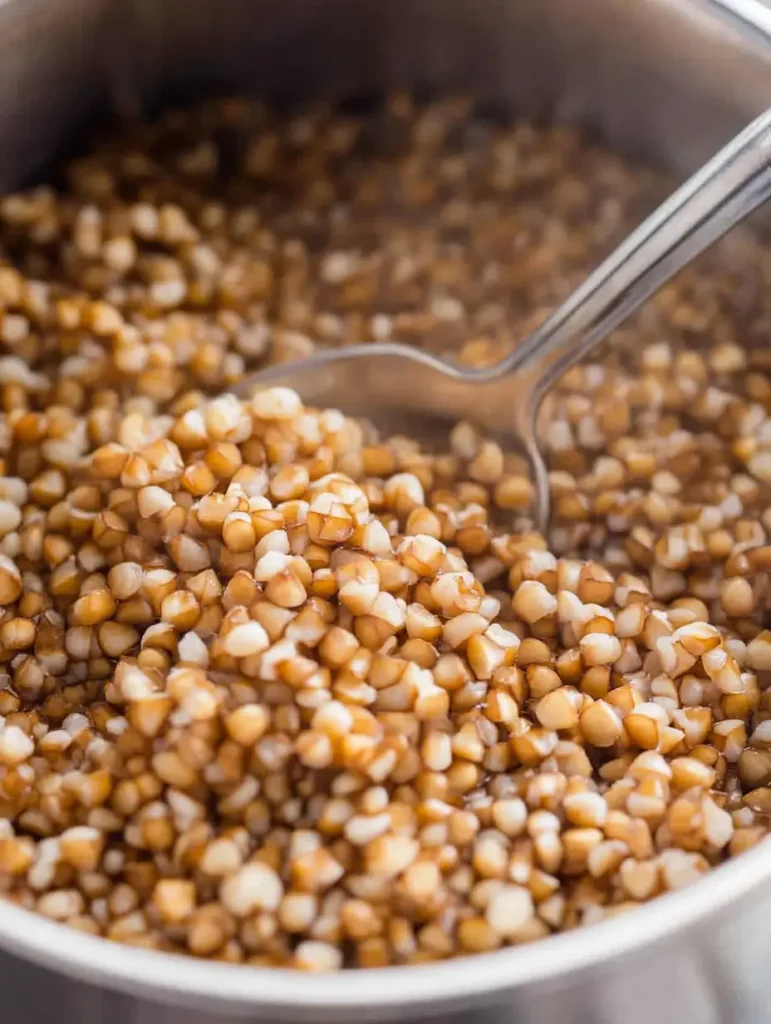
Preparation Techniques for Reducing Carbs
Learning to cook with kasha, a low-carb grain, is key. It’s all about making tasty, healthy side dishes with fewer carbs.
Soaking and Sprouting Methods
Start by soaking kasha in water with lemon juice overnight. This softens the grains and boosts nutrient intake. After soaking, rinse and cook as usual.
To sprout, keep soaking and rinsing for 2-3 days. You’ll see tiny sprouts grow.
Portion Control Strategies
Use small plates to feel full with less food. Measure kasha with a scale or cups. Aim for 1/4 to 1/2 cup cooked to keep carbs low.
Cooking Time Adjustments
Cook kasha a bit less to keep it firm. This slows down digestion and lowers carbs. Use 2 cups of water for every cup of kasha and cook for 15-18 minutes.
Let it rest, covered, for 5 minutes. Then, fluff it with a fork.
With these tips, you can make kasha a part of your low-carb meals. These methods ensure your side dishes are both nutritious and delicious.
Incorporating Healthy Fats and Proteins
Adding healthy fats and proteins to your low-carb kasha makes it a nutritious side dish. It’s great for meals that are low in carbs. These ingredients increase your meal’s nutritional value and make you feel full longer.
- Grilled chicken breast
- Pan-seared tofu cubes
- Soft-boiled eggs
- Roasted chickpeas
For healthy fats, try adding:
- Sliced avocado
- Chopped nuts (almonds, walnuts)
- Olive oil drizzle
- Pumpkin seeds
These ingredients not only go well with kasha but also help make balanced meals. They fit different diets. By mixing them, you can make tasty dishes that meet your nutritional needs.
Make sure to adjust how much you eat based on your diet. This way, you get a complete meal without too many carbs. Try out different mixes to find your top low-carb kasha dish.
Serving Suggestions and Pairings for Kasha Recipes
Make your kasha recipes even better with these tasty serving ideas. Low-carb cooking doesn’t mean you have to give up flavor or variety. Here are some great pairings that go well with your kasha dishes.
Compatible Low-Carb Side Dishes
Try these low-carb sides with your kasha:
- Roasted vegetables like Brussels sprouts or zucchini
- Cauliflower rice
- Sautéed mushrooms
- Crisp green salad
Protein-Rich Accompaniments
Adding protein makes your kasha meal complete:
- Grilled chicken breast
- Pan-seared salmon
- Tofu scramble
- Soft-boiled eggs
Seasoning and Flavoring Options
Boost your kasha’s flavor with these low-carb seasonings:
- Fresh herbs like parsley or dill
- Garlic and onion powder
- Lemon zest
- Nutritional yeast for a cheesy flavor
Try out these serving suggestions to make exciting kasha recipes. Low-carb cooking is all about being creative and finding the right balance. Mix and match these ideas to find your favorite kasha dishes.
Storage and Meal Prep Tips for Kasha Low Carb
Learning how to store and prep kasha can save you time. When you cook kasha, let it cool down first. Then, put it in airtight containers. You can keep it in the fridge for up to five days or freeze it for up to three months.
Start by cooking a big batch of kasha at the beginning of the week. Split it into smaller portions and store them. This makes it easy to have a quick, healthy meal on busy days.
- Keep raw buckwheat in a cool, dry place in an airtight container
- Store cooked kasha in glass containers to maintain freshness
- Label containers with cooking date for easy tracking
To reheat kasha, add a bit of water or broth to keep it moist. You can microwave it in short bursts, stirring each time, or warm it on the stovetop. If it’s frozen, thaw it in the fridge overnight before reheating.
Make kasha a part of your meal plan by prepping toppings and mix-ins ahead of time. Store them separately and mix them with your kasha just before eating. This keeps your meals fresh and interesting all week long.
Common Mistakes to Avoid
When making low-carb kasha recipes, you might face some challenges. Let’s look at common mistakes in low-carb cooking. We’ll also talk about how to avoid them for perfect toasted kasha every time.
Temperature Control Issues
Cooking kasha at the wrong temperature can mess up your dish. If it’s too hot, it burns. If it’s too cold, it turns mushy. Use medium heat and stir often to cook evenly.
Ingredient Proportion Errors
Getting the right mix of ingredients is key in low-carb cooking. Too much liquid makes kasha soggy, while too little makes it dry. Start with a 1:2 ratio of kasha to liquid and adjust as needed. Remember, adding veggies or proteins can change the moisture level.
Storage Mistakes
Storing kasha properly is important to keep its quality. Store uncooked kasha in an airtight container in a cool, dry place. Cooked kasha should be refrigerated in a sealed container and eaten within 3-5 days. Don’t leave cooked kasha out for too long to avoid spoilage.
By avoiding these common mistakes, you’ll get better at making low-carb kasha. You’ll enjoy tasty, healthy meals every time.
Variations and Recipe Adaptations
Kasha recipes are great for those watching their carbs. You can enjoy it at any time of day with creative twists. Let’s look at some tasty options for different diets and tastes.
Breakfast Kasha Options
Begin your day with a low-carb kasha breakfast bowl. Mix cooked kasha with almond milk, cinnamon, and berries. Add Greek yogurt or protein powder for extra protein. This meal is filling and doesn’t break your gluten-free diet.
Savory Dinner Variations
For dinner, try kasha-stuffed bell peppers. Cook kasha with veggies and lean ground turkey. Stuff it into bell peppers and bake until tender. This dish is perfect for carb-conscious meals and is very satisfying.
Special Dietary Modifications
Kasha is great for gluten-free diets. For vegans, replace animal products with plant-based ones. Use coconut oil instead of butter and nutritional yeast for a cheesy taste. These changes make kasha recipes fit for many diets without losing flavor or nutrition.
- Swap dairy milk for almond or coconut milk
- Use vegetable broth instead of chicken broth
- Add tofu or tempeh for plant-based protein
By trying these variations, you can make many kasha recipes. Whether you’re gluten-free or just watching carbs, kasha is a versatile grain to add to your meals.
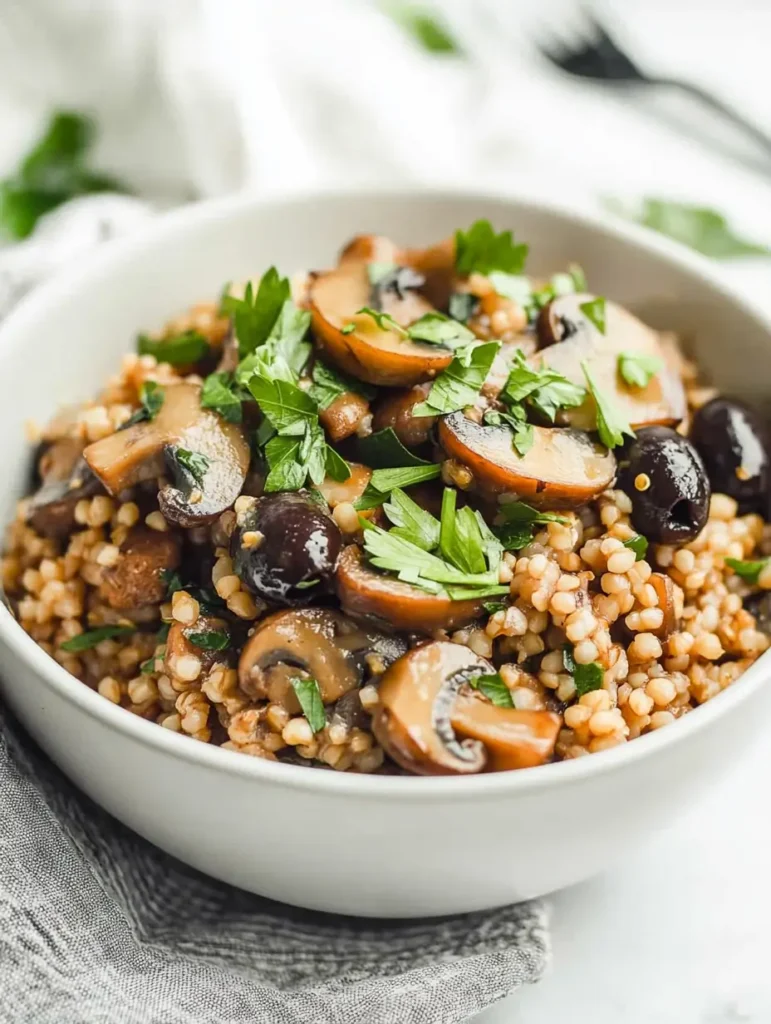
Final Thoughts on Low Carb Kasha Recipes
Making kasha low carb opens up healthy meal options. By using smart cooking methods and ingredient swaps, you can turn this classic dish into a nutritious side for your low-carb lifestyle.
With kasha, you get the best of both worlds—it’s filling and fits into your healthy eating plan. Try different recipes, pair it with lean proteins, or mix in low-carb veggies for a balanced meal.
FAQs About Kasha Low Carb
Kasha, or buckwheat groats, isn’t naturally low in carbs. A cup of traditional kasha has about 33 grams of carbs. However, by adjusting your preparation and portion sizes, you can make it work in a lower-carb diet.
While buckwheat is not considered low-carb, it can be consumed in moderation on a low-carb diet. Pair it with low-carb ingredients or use smaller portions to reduce the carb content.
Buckwheat refers to the raw seed, while kasha is the roasted form of buckwheat. The main difference is that kasha has a nuttier flavor and a firmer texture, making it more suitable for various dishes.
Yes! Low-carb kasha dishes are perfect for meal prep. You can cook a large batch and store it in airtight containers for up to 5 days in the fridge, or freeze it for longer storage.
Protein-rich options to pair with low-carb kasha include grilled chicken, baked fish, tofu, tempeh, hard-boiled eggs, or lean beef. These protein sources add satisfaction and balance to your meals.
Kasha is not typically keto-friendly because of its carb content. However, you can enjoy it in small portions, paired with high-fat, low-carb foods like avocado, nuts, or cheese, while ensuring it fits within your carb limit.

